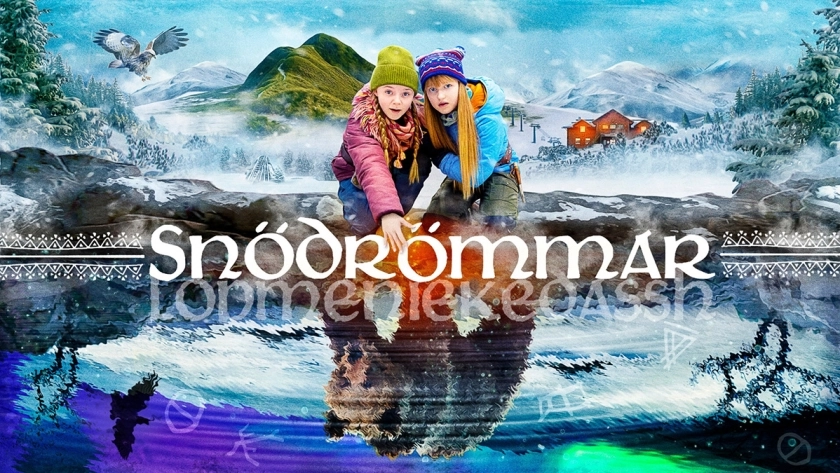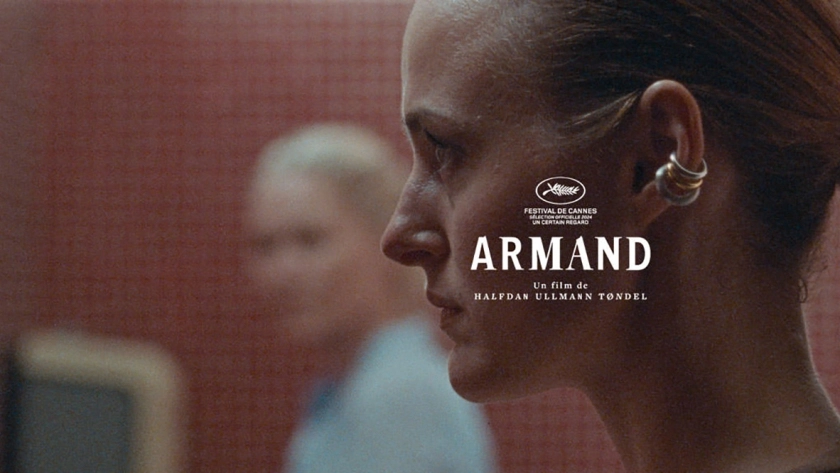
The Swedish Advent calendar, called "Julkalendern," is an essential Christmas tradition (nearly an institution) introduced in the 1960s by the Swedish public broadcaster SVT (Sveriges Television). It is watched every year by generations of Swedish families with the same enthusiasm (nearly two million viewers tune in each year). This program, aimed at Swedish children (but also adults who have kept their childlike spirit), consists of a series of 24 episodes broadcast each day from December 1st until Christmas Eve (December 24th). In the spirit of the Advent calendar, each episode is seen as a small "gift" for the viewers, especially for the children who eagerly anticipate discovering the next part of the story. The show lasts about 15 minutes and is broadcast live each evening around 6 p.m. after the family dinner, it is usually watched together as a sort of ritual.
A Brief History of Julkalendern
In fact, Julkalendern was first launched on the radio in 1957 under the name "Adventkalendern." The very first episode was broadcast on December 1, 1957 (which that year corresponded to the first Sunday of Advent) and was called "Barnensadventkalender" (the Advent Calendar for children). Host Rolf Bergström and a group of children (aged 3 to 11) discussed the Christmas celebrations. They sang Christmas carols, and the children shared what gifts they hoped to receive for Christmas and how they spent their time waiting for Christmas Eve. Then, a window of the Advent calendar would be opened, and they would talk about the picture behind that window. The form of this first version may not have been exactly what Julkalendern would later become, but the idea was already there…
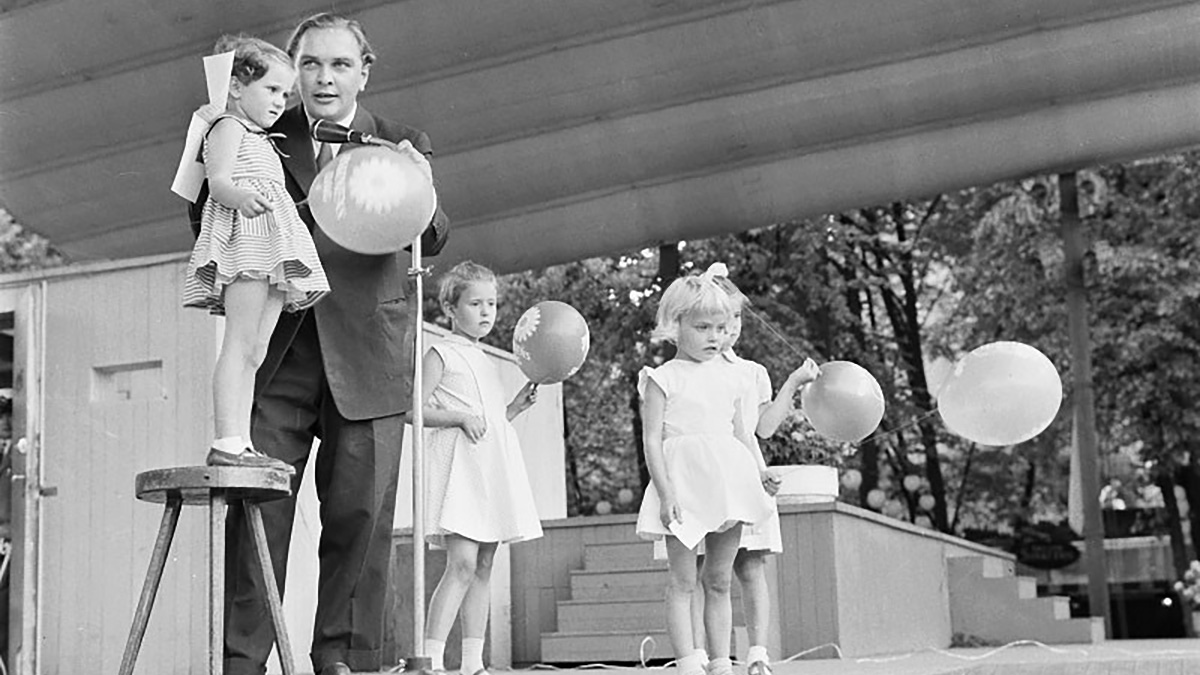 Fotograf: Ehnemark, Jan. Stadsmuseet i Stockholm
Fotograf: Ehnemark, Jan. Stadsmuseet i Stockholm
The next year, listeners were able to hear a story told by the same Rolf Bergström, surrounded by children and their parents. In 1958, there was "Julbestyr på en bondgård" (Christmas Preparations on the Farm), and in 1959, "I trollskogen" (In the Troll Forest).
Swedish radio continued each year to broadcast its own Advent calendar on the first Sunday of Advent (the number of episodes could therefore vary from year to year, as the first Sunday of Advent could fall ad the end of November). Since 1978, and to simplify, the first episode is broadcast on December 1st, and the last one on December 24th.
From Radio to Television: Titteliture
On November 27, 1960 (the first Sunday of Advent), Swedish television broadcast, based on an idea by program director Barbro Svinhufvud and in collaboration with author Gösta Knutsson (the author of Pelle Svanslös, Pelle the Cat), its very first version of the televised Advent calendar. This was essentially a visual adaptation of the radio calendar, and that year it was called Titteliture, a somewhat imaginary name that is difficult to translate into english.
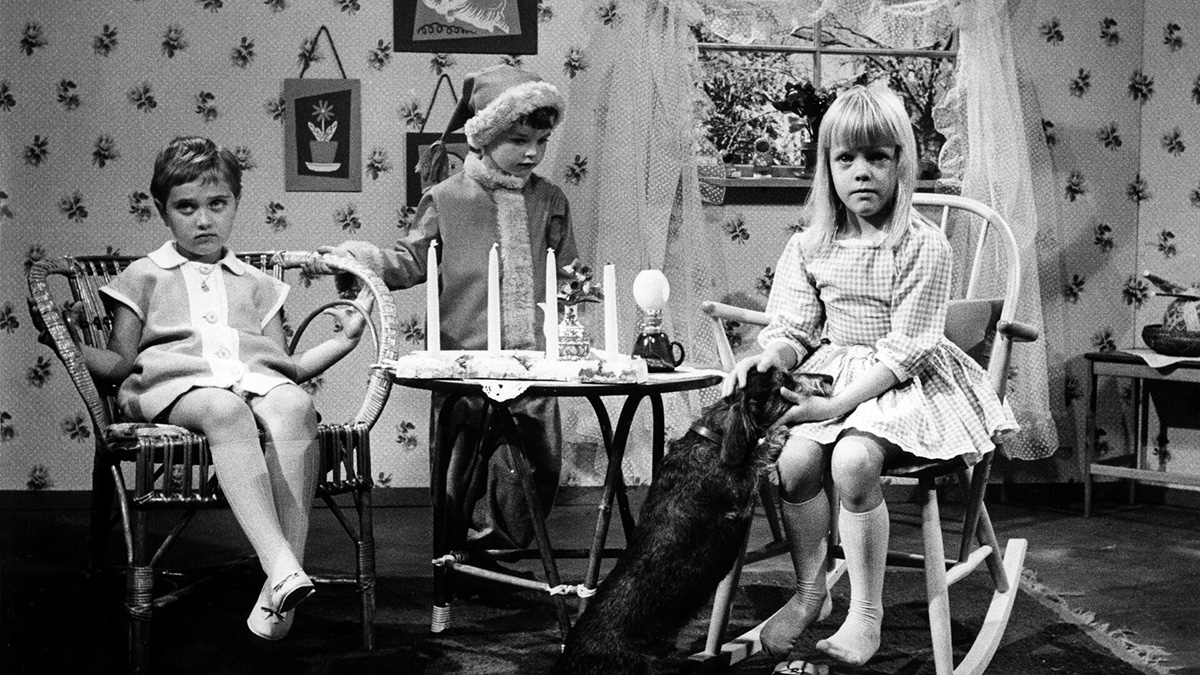 Photo SVT
Photo SVT
The series takes place in an Advent house and is hosted by Titteliture (Victoria Kahn), who opens a window each day, behind which there is either a guest or a riddle. There were also craft activities, musical performances, puppet theater, and storytelling. Many episodes (around 5 minutes) were related to the feast day of the saint of the day, and the many biblical names of December were discussed and explained. This series combined educational and playful elements, with references to Advent traditions and Christian culture, while also providing an entertaining experience with guests, games, and music. If you'd like to see what it looked like, you can watch it here.
This simultaneous broadcast on radio and television lasted for a few years, but since the 1970s (and still today), both television and radio broadcast their own Advent calendars, each adapted to the constraints and developments of their respective media.
The Current Form of the Televised Advent Calendar
The televised Advent calendar, of course, followed the technological developments of television: it was first broadcast in color in 1969 with Herkules Jonssons storverk (The Great Works of Herkules Jonsson) by Tage Danielson, and it has adapted to children and their viewing expectations. Over time, it has also become a central element of the holiday season in Sweden. Although the creators maintained the original idea of the Advent calendar as a kind of televised countdown with a new element each day, today’s calendar is more like a TV series, with episodes gradually revealing a story that unfolds throughout the month of December, up until Christmas Eve, December 24th. Thus, episode 13 each year makes a reference to the feast of Saint Lucia, for example, to coincide with the reality and timeline of the viewers.
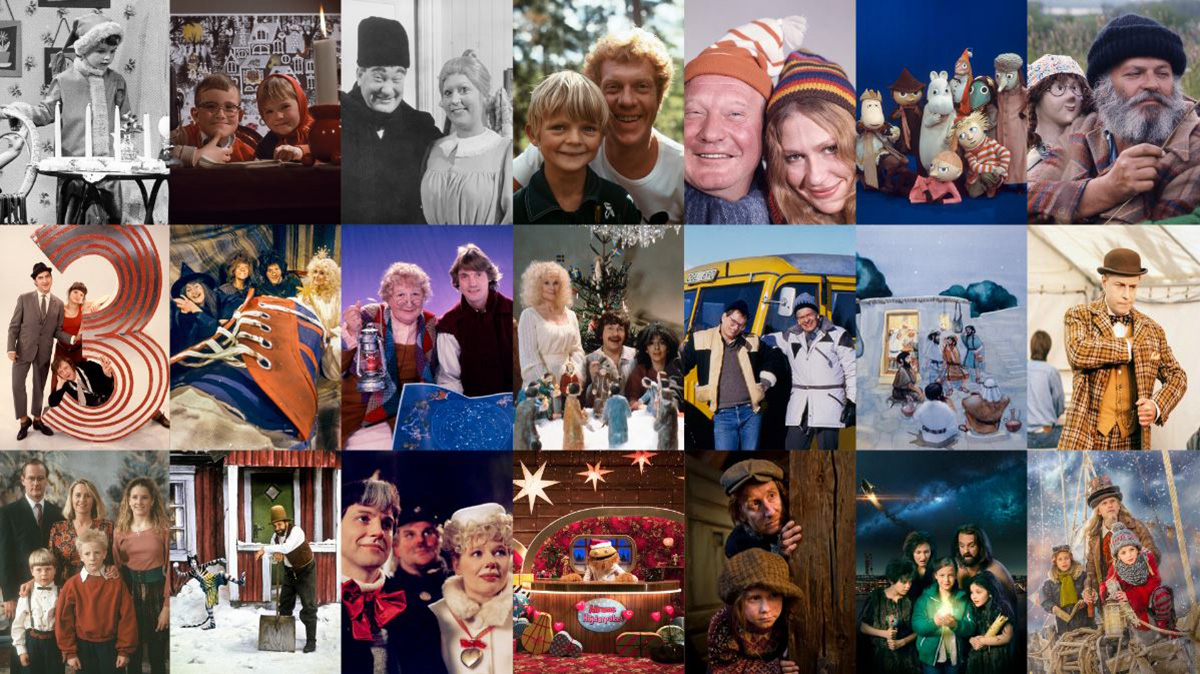 Photo SVT
Photo SVT
Over the years, this program has become a Christmas tradition that is impossible to miss, and it is often considered as important a tradition as Christmas decorations.
Many Swedes believe it is absolutely unthinkable not to watch the Julkalendern each year, which has also, as a result, become a topic of conversation during the Christmas period. The Julkalendern features a variety of stories, spanning genres from adventure to comedy, fantasy, as well as more realistic or historical narratives. The stories may include magical elements, mysteries to solve, or tales centered on characters involved in Christmas adventures. There is often a lot of discussion, and some topics have even sparked heated debates, as was the case several times with Advent calendars that were considered too politicized, too scary for children, or even sexist.
Some Series Considered Legendary
Over the years, several Julkalendern series have become something of a classic, such as:
- 1. "Stjärnhuset" (1981): The House of Stars, one of the very first series to be broadcast, marking the beginning of the tradition.
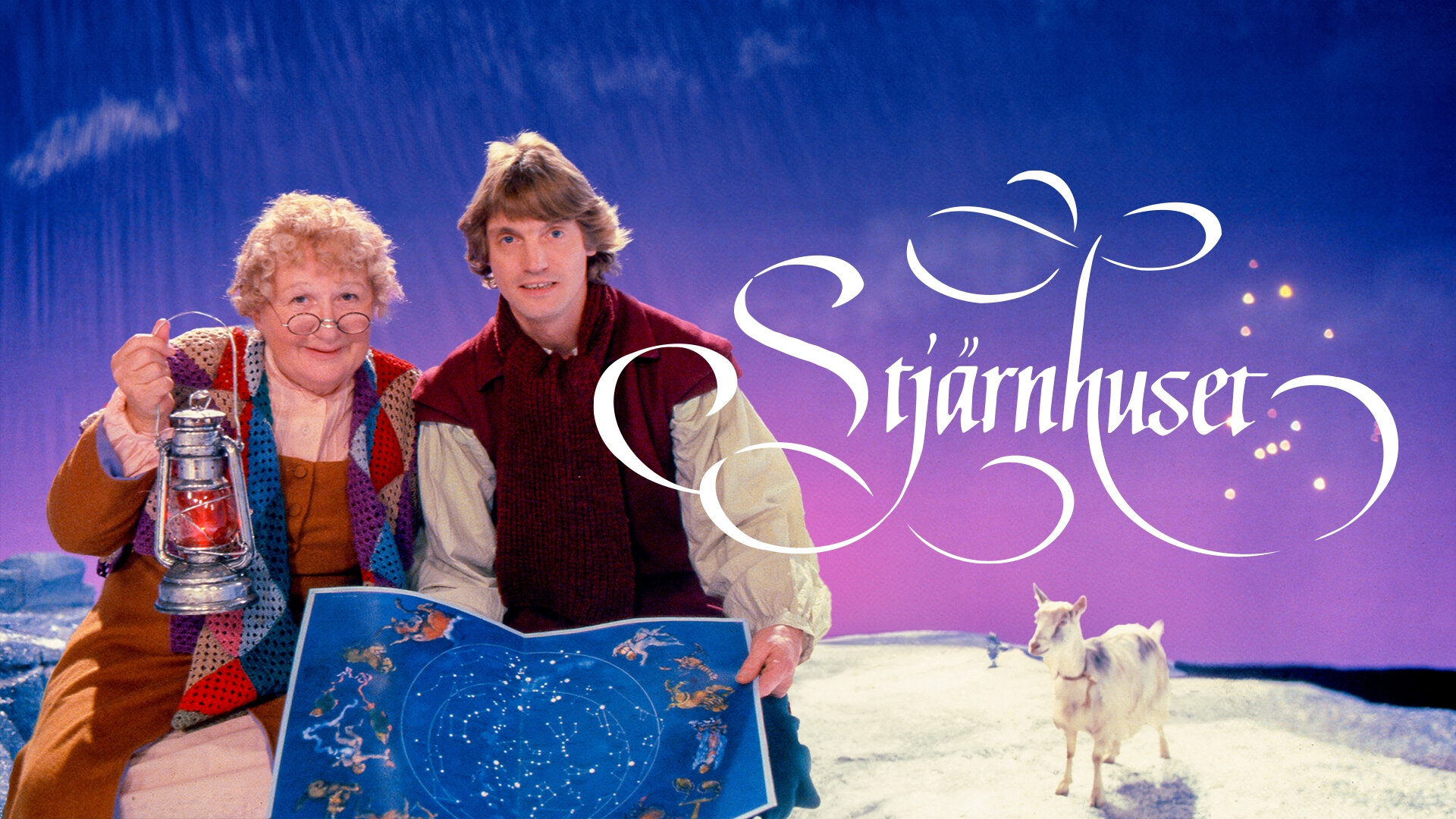 Photo svt play
Photo svt play
In the first episode, Astro and Mytha arrive at the House of Stars, an observatory located at the top of a mountain where they will spend their time until Christmas. Mytha is an expert in astronomy. She teaches Astro about various celestial phenomena, such as stars, planets, and galaxies. She combines her knowledge of astronomy with stories from Greek mythology. Throughout the series, Mytha and Astro explore the most remarkable constellations in the northern starry sky, as well as the history surrounding them. At the same time, they engage in classic Christmas traditions, such as the celebration of Saint Lucia and decorating the Christmas tree.
- 2. "Mysteriet på Greveholm" (1996): Mystery at Count Greveholm's Castle
An enormous success, undoubtedly one of the most popular, so much so that it led to a sequel in 2012 in the form of an Advent calendar: Mysteriet på Greveholm – grevens återkomst (Mystery at the Castle – The Return of the Count).
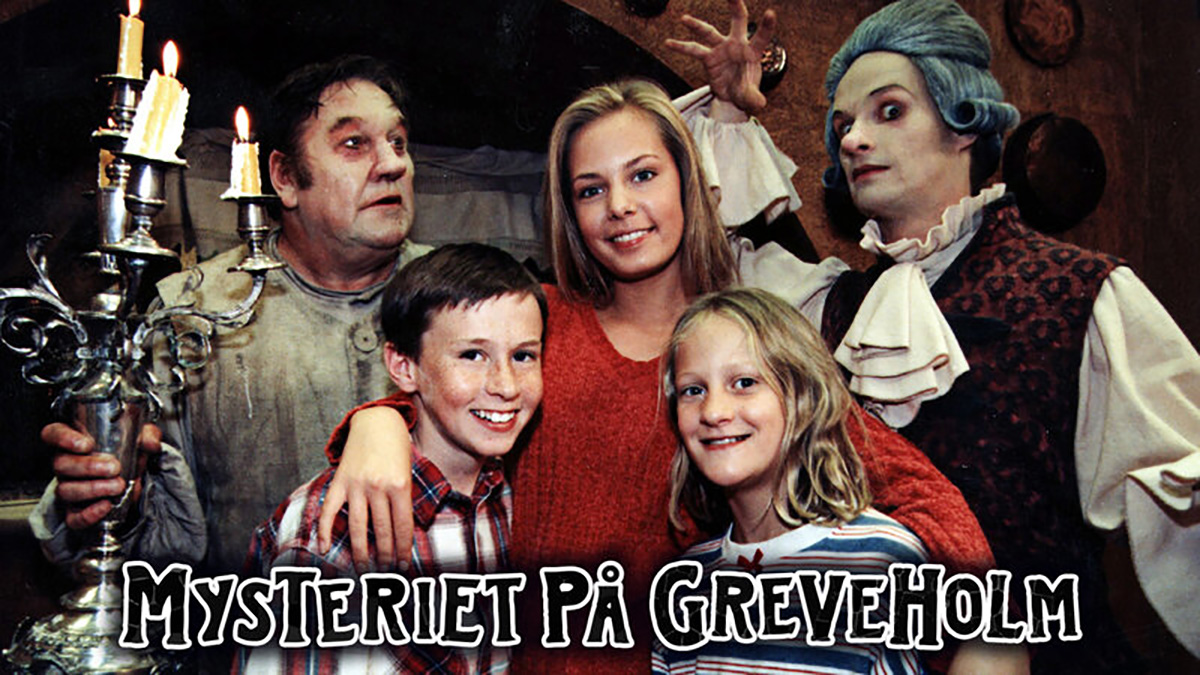 Photo SVT Play
Photo SVT Play
This series combined adventure and mystery in a haunted mansion. It is considered one of the most popular Julkalendernof all time and broke viewer records. The Olsson family moves to the countryside to celebrate Christmas. By mistake, they end up in the isolated Greveholm castle instead of the house they were supposed to rent. It turns out that there are ghosts in the castle, but this doesn’t scare the younger children, Lillan and Ivar, who are excited to go on a treasure hunt and search for mysteries. However, their older sister Melitta is terrified of ghosts (and also of spiders) and wants to go back home. Soon, she meets the newspaper delivery man Måns, who decides to photograph the ghosts, Staffan and Jean. Gradually, their friendship turns into a love story. The parents, Leif and Astrid, don’t believe in ghosts and remain completely unaware of the mystery the children are starting to immerse themselves in. At first, the ghosts want to drive the family out of the castle, but they eventually realize that the secrets hidden in the castle must finally be revealed once and for all.
- 3. "Trolltider – legenden om bergatrollet" (2023): The Time of the Trolls: The Legend of the Mountain Troll
A Christmas story that mixes funny and dramatic moments and deals with family and relationships. This is also a sequel to another televised Advent calendar from 1985.
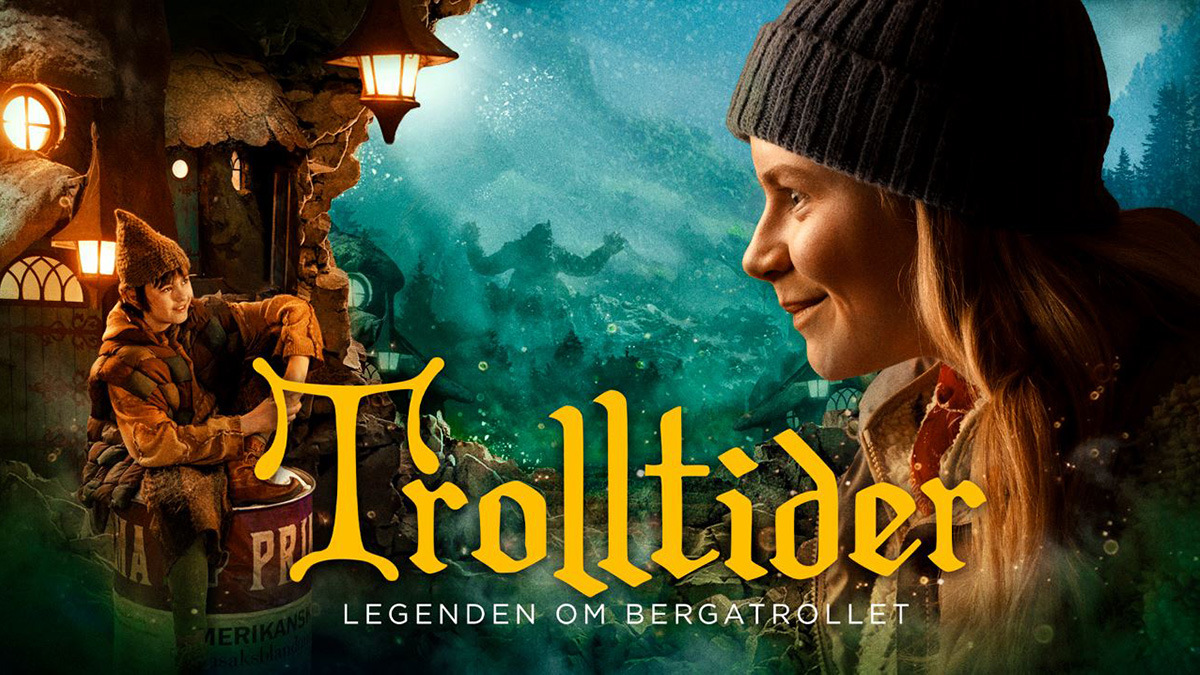 Photo Svt Play
Photo Svt Play
According to the legend, long ago, the powerful Mountain Troll ruled over the North, but together, the four peoples – the trolls, the fairies, the witches, and the humans – managed to make him sleep using a magical amber stone. However, one day, a human found the stone and broke the spell that kept the troll asleep. Saga and Love, two twelve-year-old children, one human and the other a troll, teamed up to prevent the Mountain Troll from waking up and taking control of the world again.
The Julkalendern is much more than just a television series: it is a festive tradition deeply rooted in Swedish culture. It embodies the spirit of Christmas through captivating stories, often funny, magical, and full of suspense. Each year, it brings Swedish families together around the television and creates an Advent ritual that many eagerly anticipate.
 en
en FR
FR IT
IT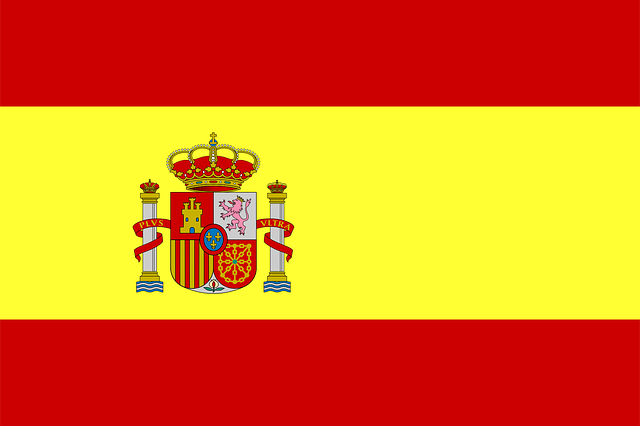 ES
ES
